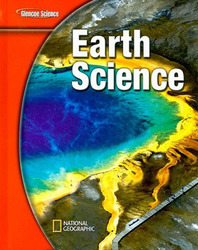THE FOSSILS OF ANTARCTICA Introduction In this WebQuest, students do some Internet research on the fossils of Antarctica. They learn what fossils have been found in Antarctica, and what those fossils indicate about the climate and location of the continent millions of years ago. Students also learn why so few fossils have been found in Antarctica. Finally, students answer some questions about the fossils of Antarctica, based on their Internet research. Top
Task While students are doing their Internet research, they will try to answer the set of questions given. Each web site has some of the answers to the questions, but several of the questions require information from two or more of the web sites. Students should be able to compile information to answer the questions as they read through each web site. Although several of the web sites give detailed information about the types of fossils found in Antarctica, and the geologic time periods represented, students are not expected to become experts in these areas. Instead, they should be able to gain a general understanding of what Antarctic fossils indicate about the climate and location of the continent millions of years ago. From their Internet research, students should also be able to make a reasonable conclusion as to whether these fossils support the theory of plate tectonics. Objectives - List the types of fossils found in Antarctica and the geologic time period each fossil represents.
- Discuss how these fossils support the idea that Antarctica once had a warmer climate than it does at present.
- Identify the evidence that supports the idea that Antarctica and South America once were connected by a land bridge.
- Describe how the fossils of Antarctica support the theory of plate tectonics.
Top
ResourcesStudents will use the Internet links given to find out all about the fossils of Antarctica. They will learn about the time periods that each of these fossils represents, and about the climate that these species lived in. Students will identify the relevance of finding certain types of fossils in Antarctica and discuss how the fossils support the idea that Antarctica once had a warmer climate than it does at present. Finally, students will decide for themselves if the fossil evidence from Antarctica supports the theory of plate tectonics. Top
Time 1 class period for Internet research and answering the set of questions Top
Process As students progress through the list of web sites, you may help them to focus on what they need to know to answer the questions given. Several of the web sites have links to other web sites with relevant information. If time allows, you may want to allow students to explore this subject further. However, many of the sites eventually link back to those listed on the student pages. Top
Evaluation
Click Here for Rubric You may assign 10 points to each of the 10 questions for a total of 100 possible points. The answers to the questions are given below. You may rate the answer to each questions by the following scale: Excellent: 9-10 points; Very Good: 7-8 points; Good: 5-6 points; Satisfactory: 3-4 points; Poor: 1-2 points; and Unsatisfactory: 0 points. Questions about the Fossils of Antarctica - The first fossils were marine reptiles called plesiosaurs. They were found on Seymour Island in 1982.
- The first dinosaur fossil was an ankylosaur, found on James Ross Island in 1986.
- a hadrosaur, a duck-billed dinosaur
- Hadrosaurs were land animals, about 20 feet tall. This fossil was the first duck-billed dinosaur found outside North and South America, so it provides evidence that once South America and Antarctica were connected, probably by a land bridge. Hadrosaurs were plant eaters. Antarctica must have been covered with vegetation at that time to support large plant eaters such as hadrosaurs; thus, the continent must have had a tropical or temperate climate at that time.
- The Cretaceous, about 146 million years ago
- a Cryolophosaurus, "frozen crested reptile"
- Among the fossils found were the following: a hypsilophodontid, iguanodontid, plateosaurid, mosasaurs, a pterosaur, various sauropods, and a Lystrosaurus. Accept any answers that students can verify at one of the Internet links given.
- Very few fossils have been discovered in Antarctica because 98 percent of the continent is covered year-round by ice. Just a few of the islands along the Antarctic Peninsula and the tops of the Transantarctic Mountains are free of ice at times during the year. Only a few of the rocks thus exposed are of late Triassic, Jurassic, or Cretaceous – the geologic time periods during which dinosaurs lived.
- The Byrd Expedition found fossil plants on the sides of Mt. Weaver. Ernest Shackleton reported seeing coal beds within 200 miles of the South Pole.
- Coal is formed by plants growing in profusion in swampy areas. Antarctica must once have been located in a more temperate or tropical area to support the growth of enough plants to produce a bed of coal.
Top
Conclusion Using information gathered from the Internet, students should be able to answer the questions given about the fossils of Antarctica. From their research, students should be able to draw some conclusions about the climate and position of Antarctica millions of years ago, and be able to compare that location with its present location. Students should be able to identify the evidence that fossils provide to support the theory of plate tectonics. Top
|





